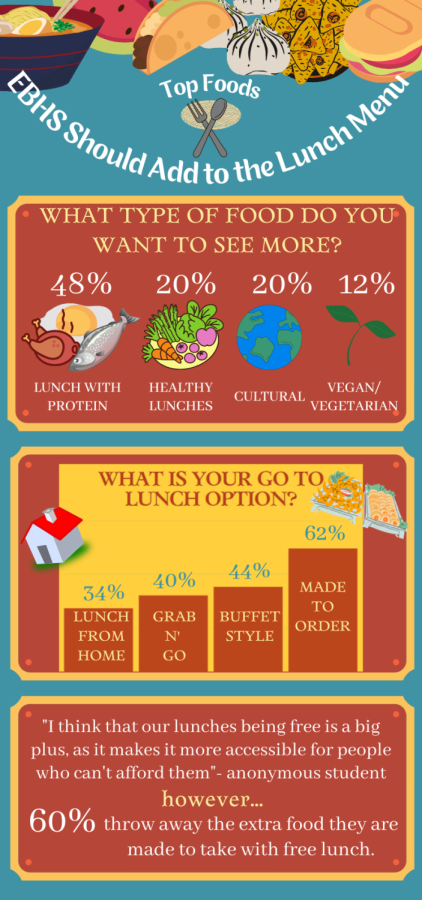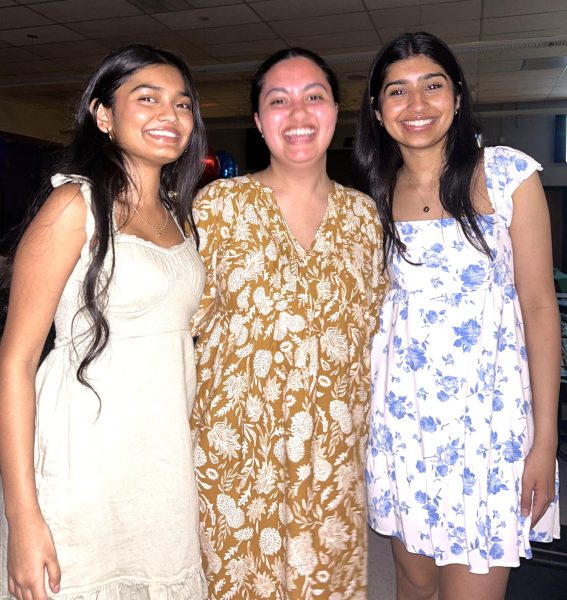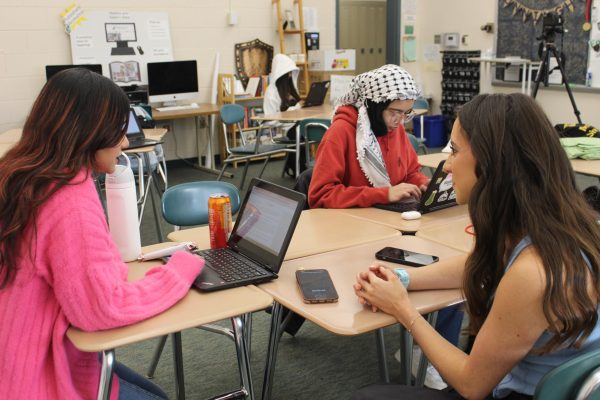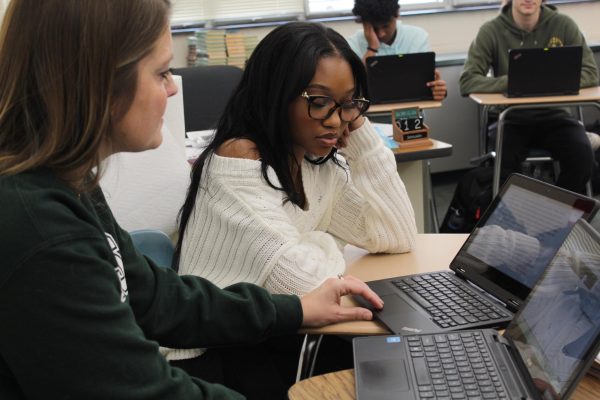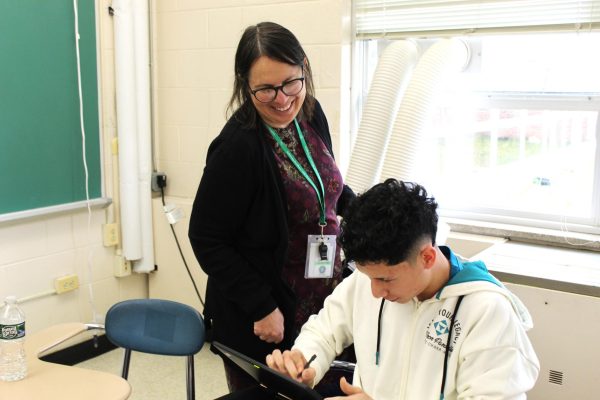Dine and Development in the EBHS Cafeteria
For some, the EBHS cafeteria is a great place to fuel up for class. However, there are others who are longing for more. But what else could we add to make it better?
April 1, 2022
When our school district announced that free lunch would be available to all students this year, it was a huge relief for those who had always been too lazy to bring food from home or couldn’t afford the lunches in school. One student says that “free lunches are great because I don’t have to worry about not having money in my account or cash on me so I have the ability to just pick up lunch or breakfast…”
However, does free lunch mean worse food in comparison to when schools charged the students?
Most students would prefer more foods with protein in the form of bars or whole foods given their specific dietary restrictions and after-school activities of work, sports, or clubs. Alefiya Presswala, 12, explains that “I can’t eat pork and I also have chronic migraines so I have to eat a lot of food that gives me energy and keeps me hydrated”. Students need food that will fuel them for other parts of their day, so the classic slice of pizza and tater tots may not be cutting it.
There are also students who have peanut, gluten and/or dairy allergies and are vegetarian. This may be why so many students prefer made-to-order or buffet-style lunches rather than the typical Grab N’ Go.
The biggest struggle EBHS faces with school lunches is how often students waste free snacks like apples, carrots, and oranges. One student says the required fruits/vegetables would “be more popular and welcome if there were options such as bananas or tangerines.” Perhaps using this wasted food elsewhere, such as composting or donating for animal feed, would help this recurring problem.
It is important that the EBHS cafeteria food fits the liking and lifestyles of our student population. Catering to our needs could potentially help prevent wasted food and help students take more control over their health and nourishment.


